Why is the DC voltage dragged down to 0.9 V in this circuit after the speaker has beeped for a little while and has stopped? I use a DC power supply with the DC voltage set at 3 V.
-
Which voltage is it? You have to label all nodes. – Amit M Oct 08 '22 at 10:14
-
3You don't need to label **all** nodes @AmitM – Andy aka Oct 08 '22 at 10:18
-
Andy aka, at least the voltage source should be labelled. – Amit M Oct 08 '22 at 11:23
-
4There is only one voltage source in the circuit and symbolically that is as clear as daylight. – Andy aka Oct 08 '22 at 12:08
-
Is this a new design or was it copied or modified from another known working design? (Any link to the original?) Was the intent of your design a temporary beep or something else? Is it possible there is a simple error in the design? For example if C1 were a resistor the NPN would be biased more reasonably. Alternately, if R1 were a high value resistor (like 470K) the circuit may oscillate more reliably as is. From the other comments, the issue with the battery still applies, (high current draw) – Nedd Oct 09 '22 at 04:54
-
it is a new design based upon one design with a switch above R1. which shall beep in a rising tone upon switch on and after switch is off sound would last in a dropping tone for a short while. I did this modification to see if the sound stays once C1 reach 0.67V at a stable tone. but it stops and when I change from 9012 to 9015 it works. do not know why and also see voltage drops with 9012 and so I figure the drop leads to sound going off. just don't know. – ankyxia06 Oct 09 '22 at 08:11
-
Now that you mention that you changed between a 9015 and a 9012 transistor there may be an issue. Most classification grades of the 9015 have a much higher DC gain than a 9012 part. The 9012 is just not a good replacement for the 9015. In the circuit the base of the PNP is not well controlled so the DC gain parameter has a large influence on the circuit operation. It also seems that the 9015 is listed as obsolete from some manufacturers. – Nedd Oct 10 '22 at 06:43
-
thanks, will give it a try again on this circuit and share if some significant progress. – ankyxia06 Oct 10 '22 at 10:08
3 Answers
Because you are putting a DC load through your speaker that is large enough to drain your power supply. With a duty cycle of 50%, you are putting 0.56W of RMS power through an 8 Ohm load, but a considerable part of your output is DC, and the DC resistance of an 8 Ohm speaker is more like 6 Ohm. So the actual power drain is even larger.
- 2,507
- 1
- 13
Expanding @user107063's answer, you are effectively feeding a DC voltage to an inductor, which will not produce the intended effect. Clearly, you are trying to make an electronic siren or alarm, however, let's analyse your circuit in terms of the device's fundamental properties.
First, what is the current that will flow through the speaker when Q9012 turns on?
Given an inductor's impedance, \$Z_{L} = {\omega}L\$, and applying Ohms Law:
$$ V_{L} = Z_{L}{\cdot}I_{L} $$
solving for \$I_{L}\$ we obtain:
$$ I_{L} = \frac{V_{L}}{Z_{L}} $$
From this, given that you are fedding a DC current, \${\omega} = 0\$ and thus \$Z_L = 0\$, the current through the inductor is \$I_{L}{\rightarrow}{\inf}\$.
Since the battery cannot provide infinite current, it will drop its voltage.
Second, how does the circuit work? It is pretty simple:
\$C_1\$ gets charged via \$R_1\$ with a time constant \${\tau} = {R_1}{\cdot}{C_1}\$. Similarly, \$C_2\$ gets charged via \$R_3\$ since the coil from the speaker is effectively a wire (DC regime). When the voltage in \$C_1\$ exceeds a (theoretical) \$V_{be}\$ of 0.6V, the transistor Q9013 puts the base of the PNP Q9012 to ground, turning it on and creating a path (red arrow) through the speaker.
Your circuit works for a short time, since the charging rates from both capacitors are different and some pulses are created creating audible oscillations, however, these oscillations might be decaying making the circuit operate in full DC after a while.
To make this circuit work, you would need to make some modifications on the circuit. To begin with, I would place a capacitor in series with the speaker, to ensure that all DC gets blocked. The most important aspect is to make sure that the oscillations do not cease. Placing the speaker on the high-side of the output transistor which should receive pulses on its base. Another option is coupling the speaker via an audio transformer for impedance matching (as it was done in the past on radio receivers).
- 823
- 2
- 13
-
1A capacitor in series with the speaker does not work since there is nothing that could sink current on the oscillator side and the blocking capacitor will just charge up to Vcc after which the speaker will remain silent. – user107063 Oct 08 '22 at 20:57
-
If you _feed_ pulses to the speaker through the capacitor, they will pass through. That's why I mentioned that the circuit needs to be modified. – Daniel Melendrez Oct 08 '22 at 21:21
-
1Where do you imagine the charges on the oscillator side of the capacitor to go to? If you don't drain them in some manner, the capacitor will charge up to Vcc after which the speaker will remain silent and the oscillator stopped. – user107063 Oct 08 '22 at 23:16
-
hi Daniel, by "Since the battery cannot provide infinite current, it will drop its voltage" why does it drop to around 0.9V and why doesn't 0.9V trigger the sound? – ankyxia06 Oct 27 '22 at 10:34
why is the DC voltage dragged down to 0.9V in this circuit after speaker beeps a little while
Because your battery cannot provide the load current demanded by the circuit and therefore its terminal voltage drops. Are you using a button cell battery or a 3 volt coin cell battery for instance. Have you read the data sheet for your battery to determine how much current it can reliably supply?
- 434,556
- 28
- 351
- 777
-
Thanks, I used DC supply source equipment(AC to DC) instead of 3V battery. and the DC supply equipment is originally set @3V and the LCD on equipment indicates a drop from 3 V to 0.9V. – ankyxia06 Oct 09 '22 at 07:40

